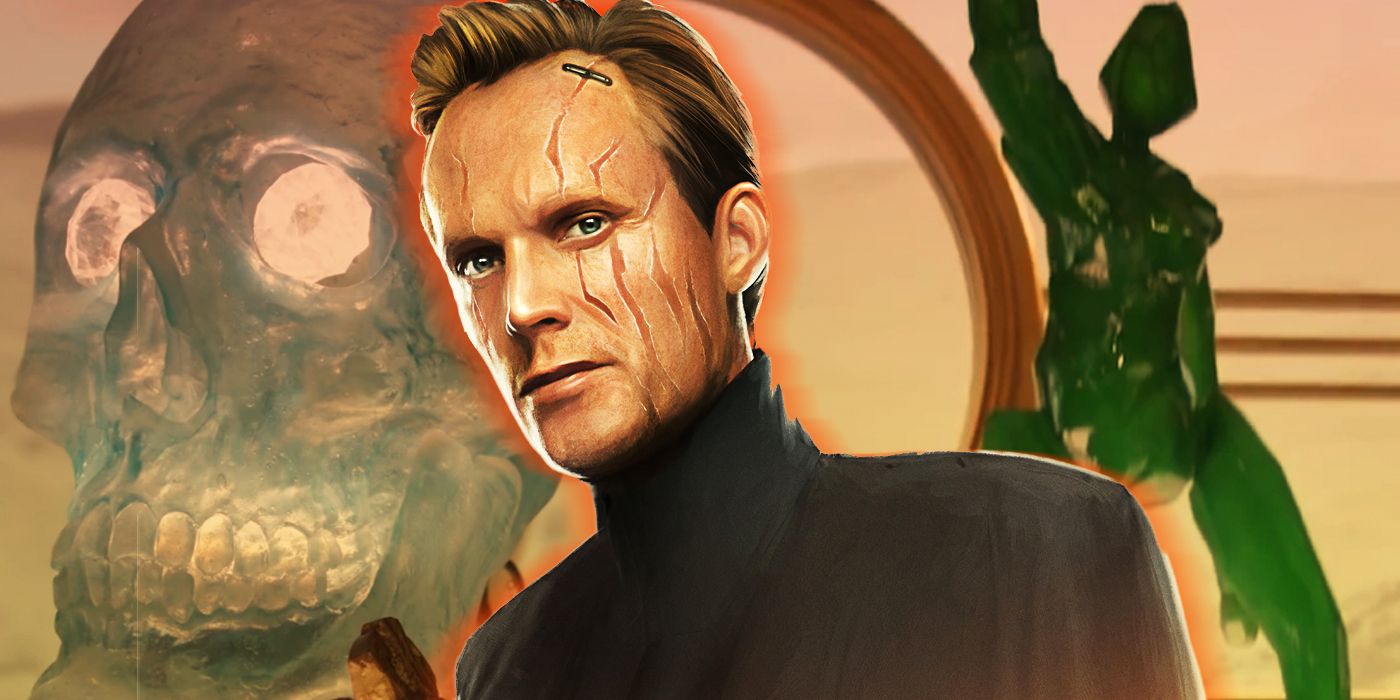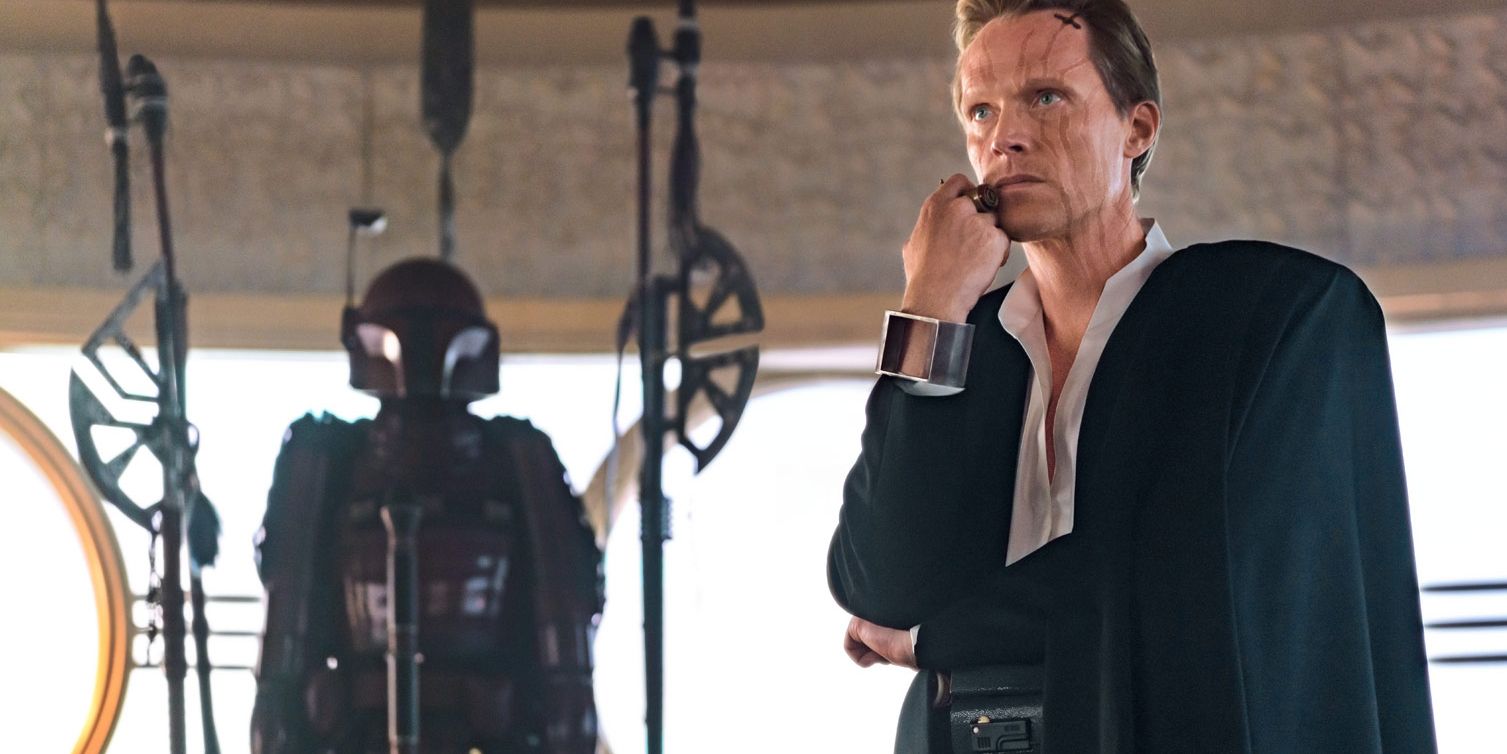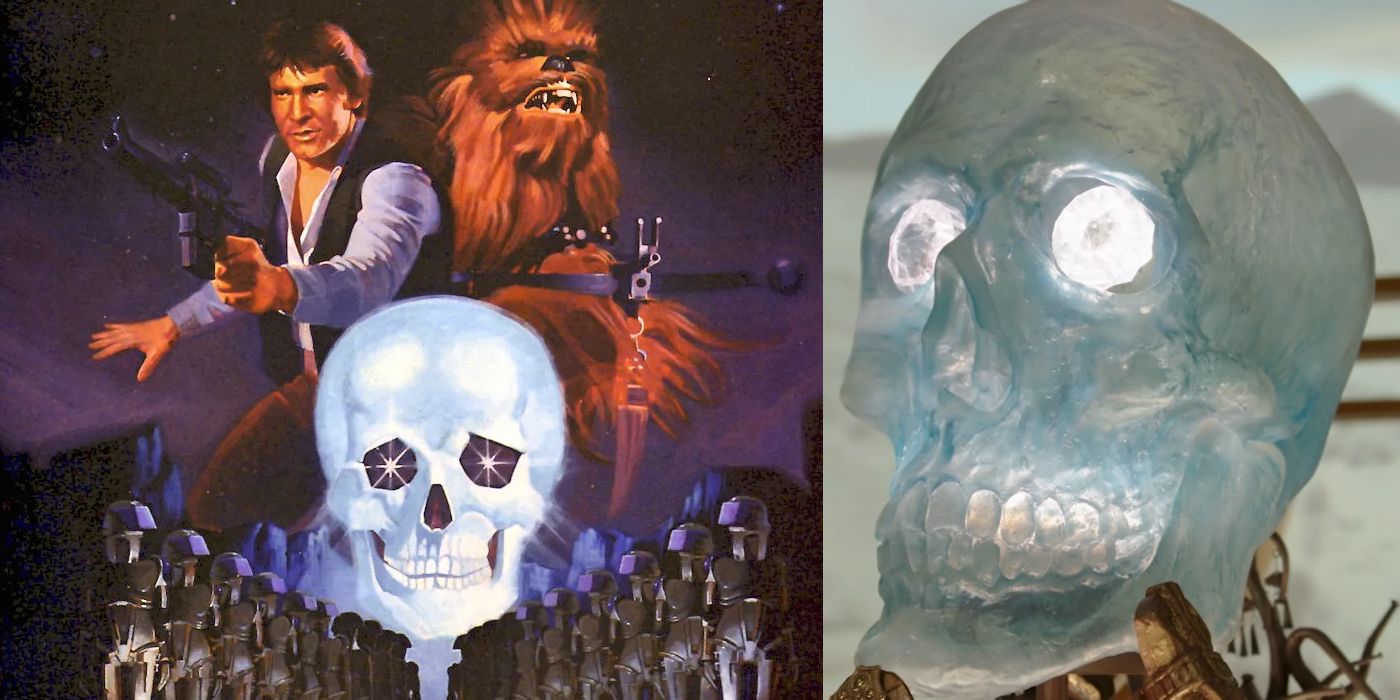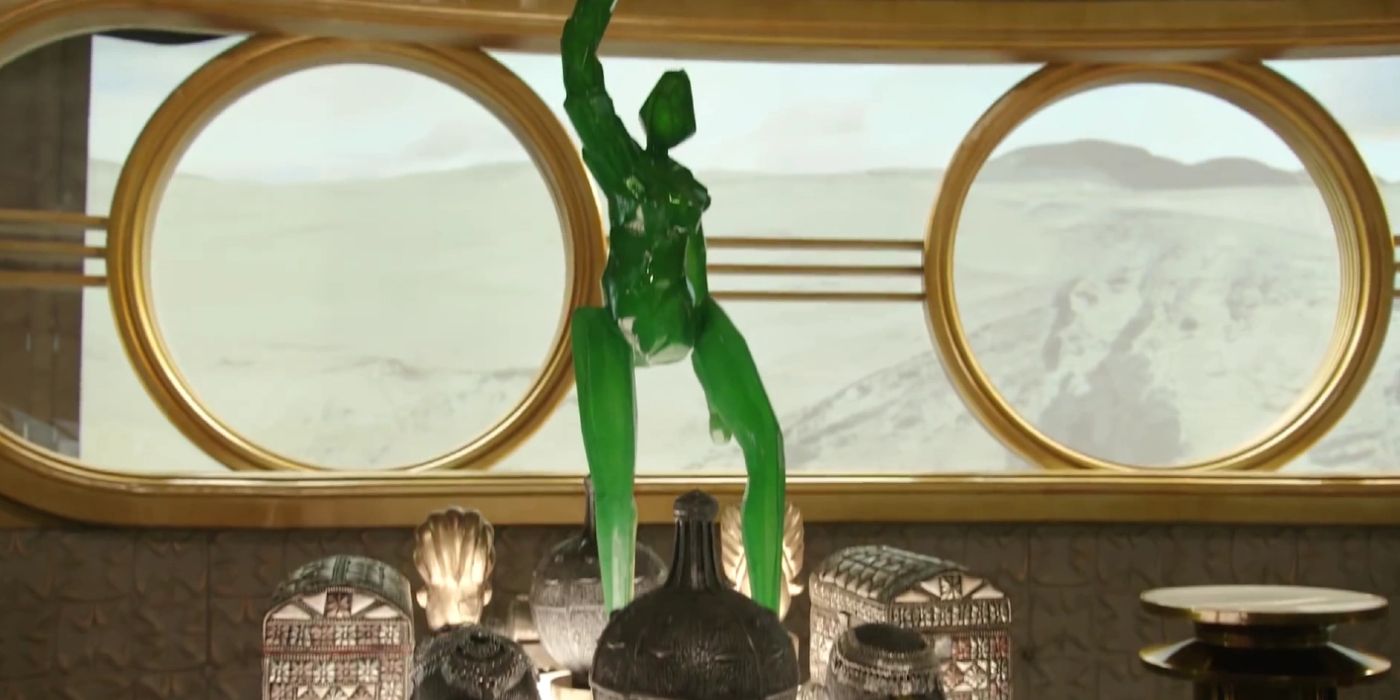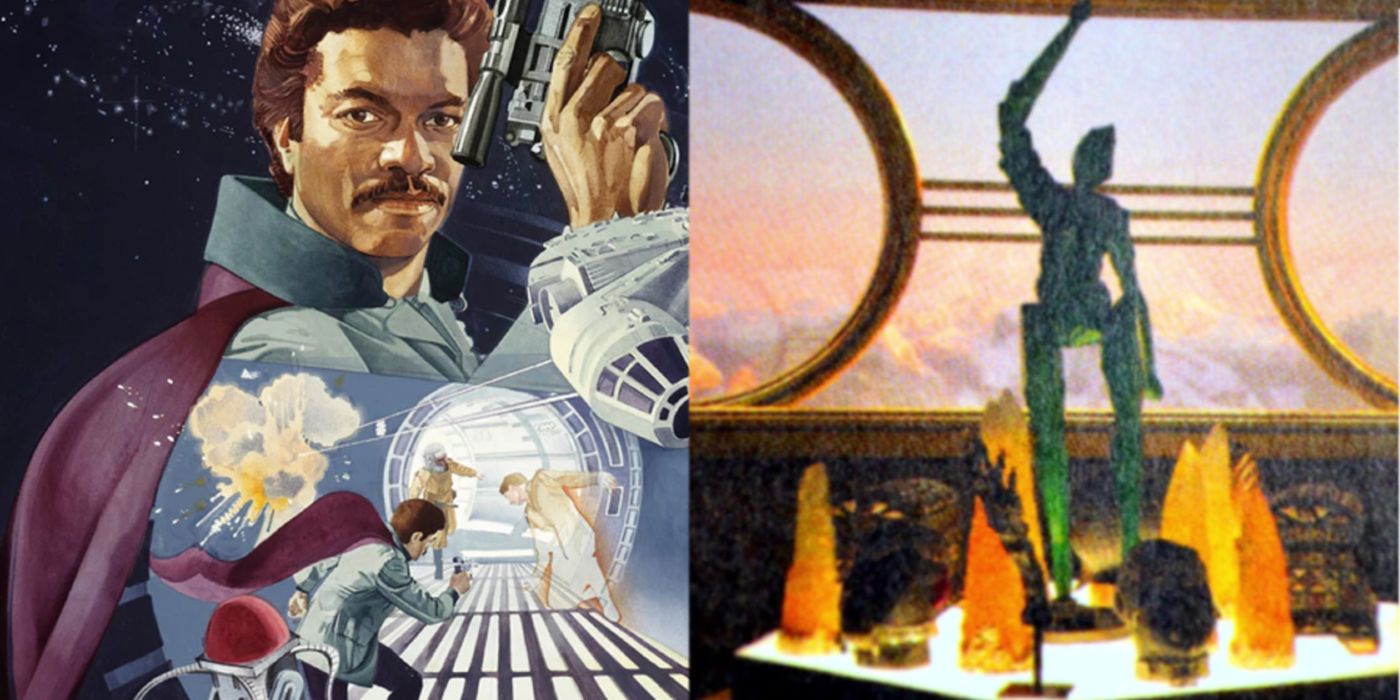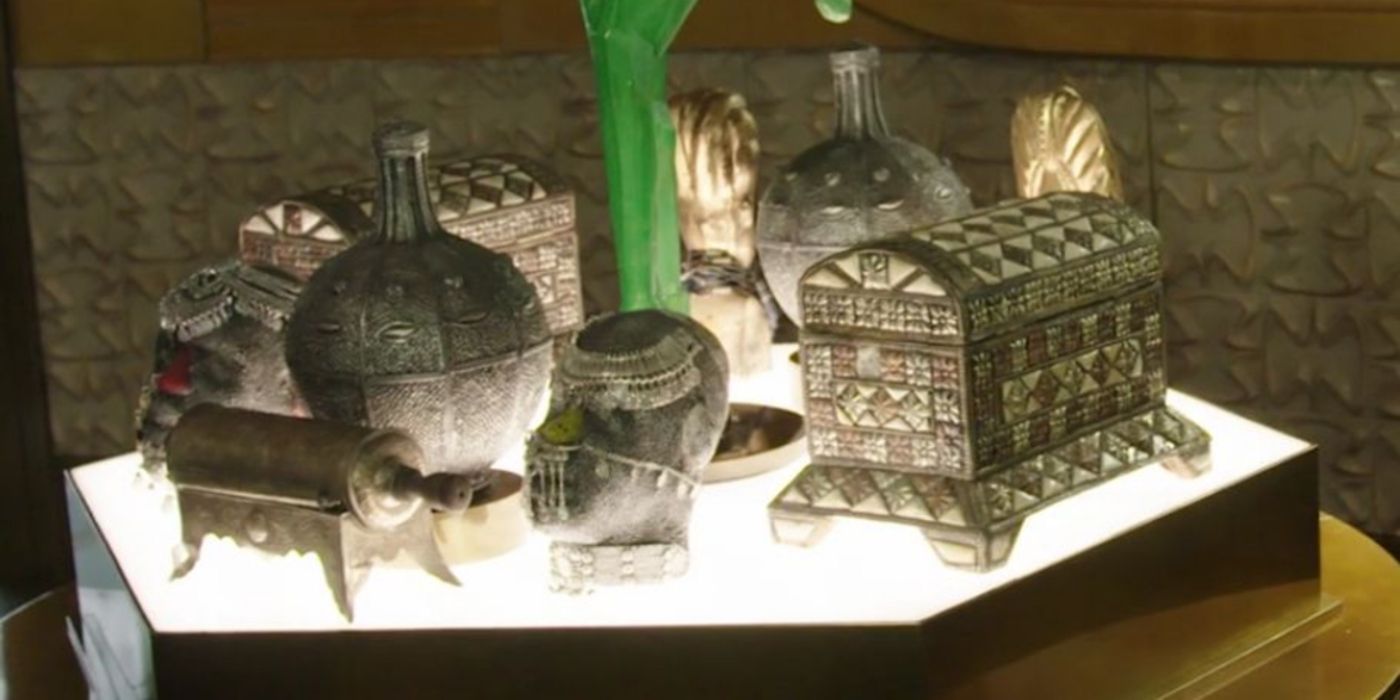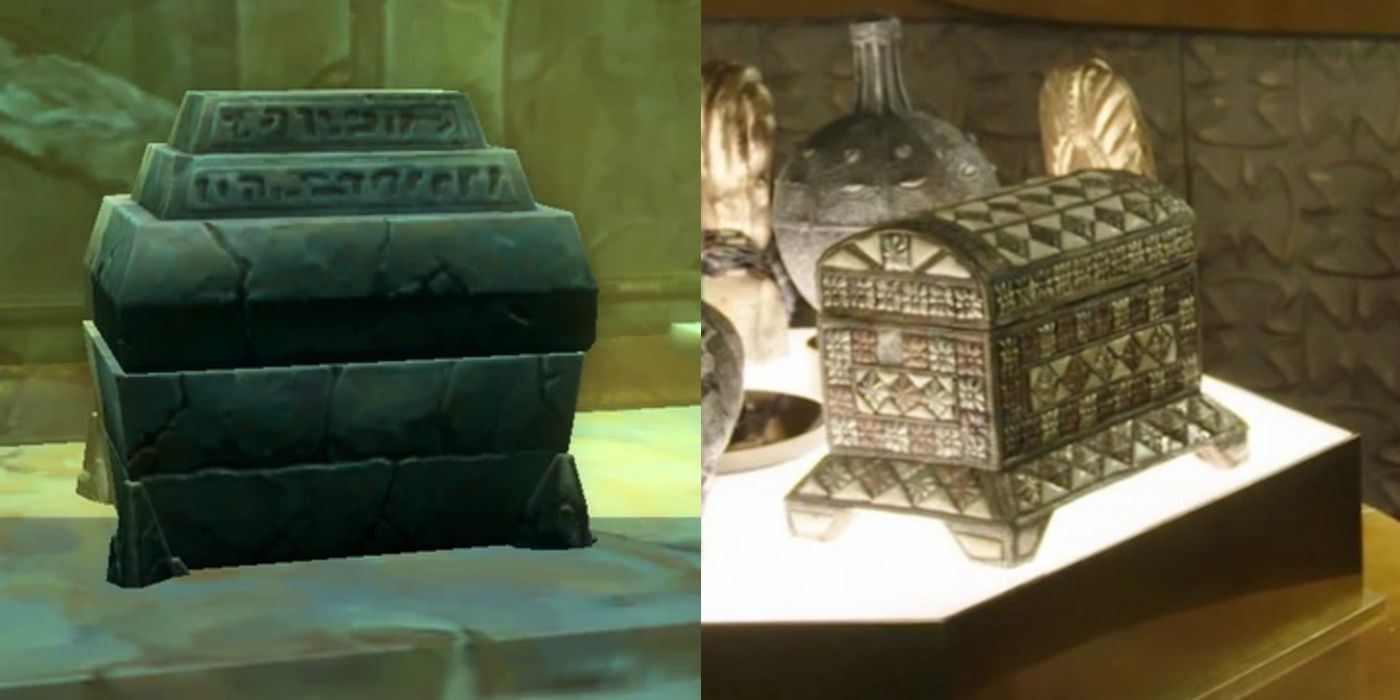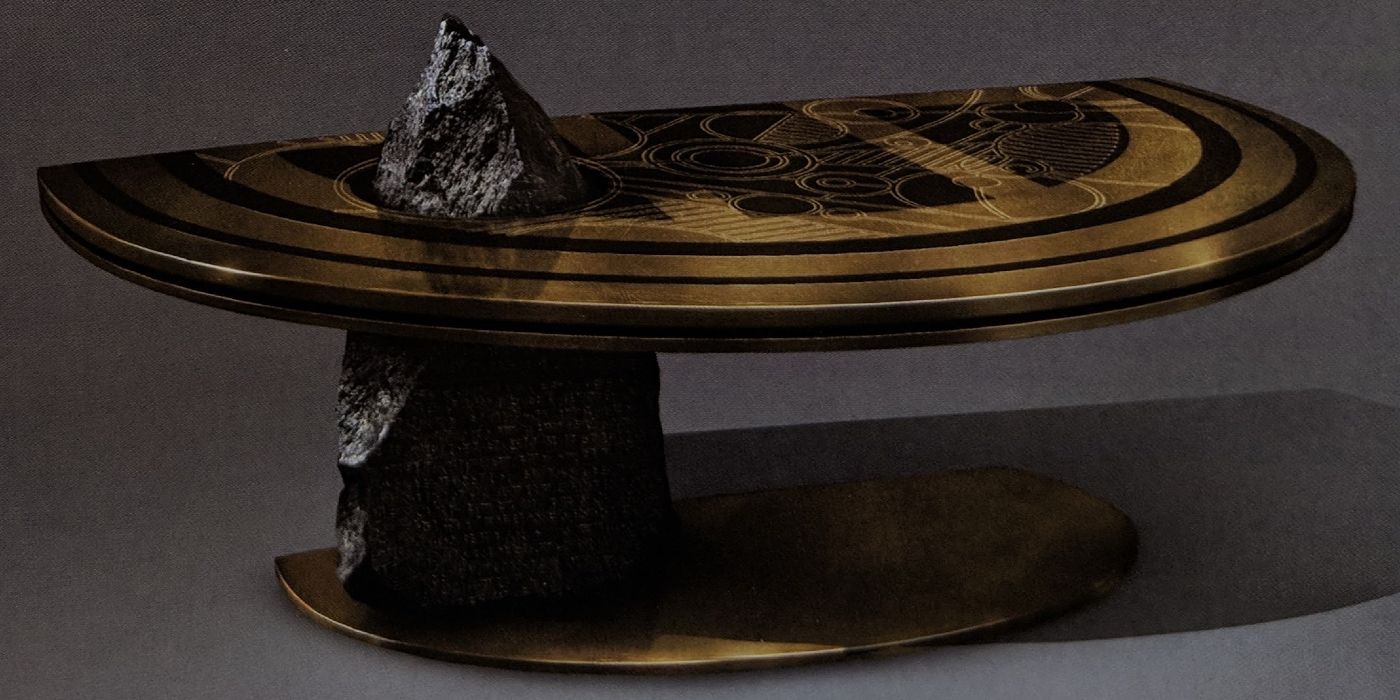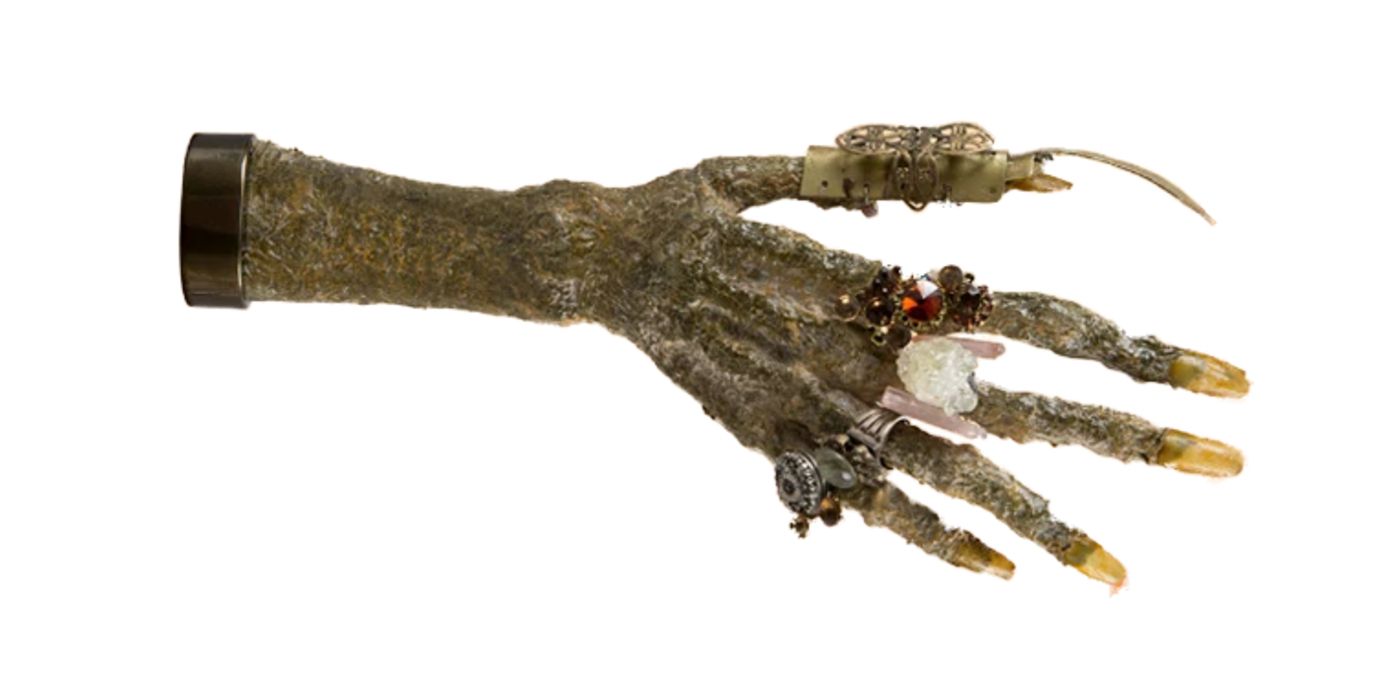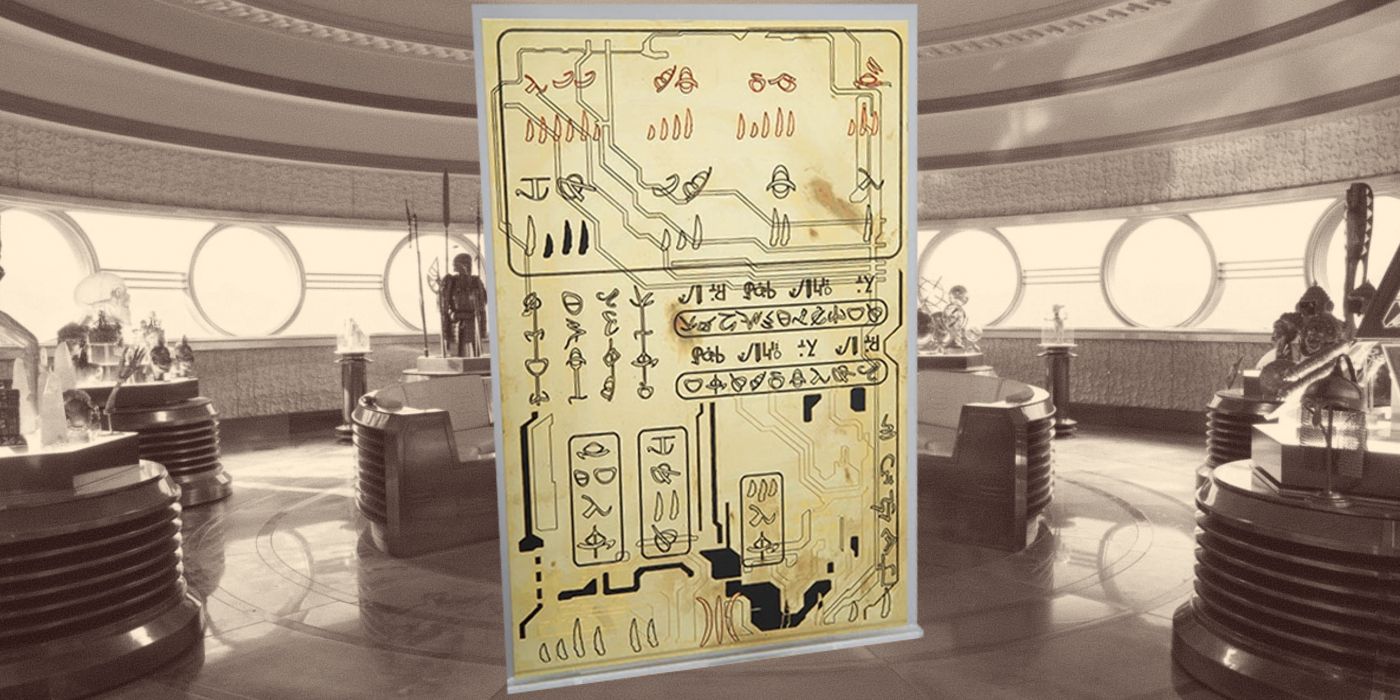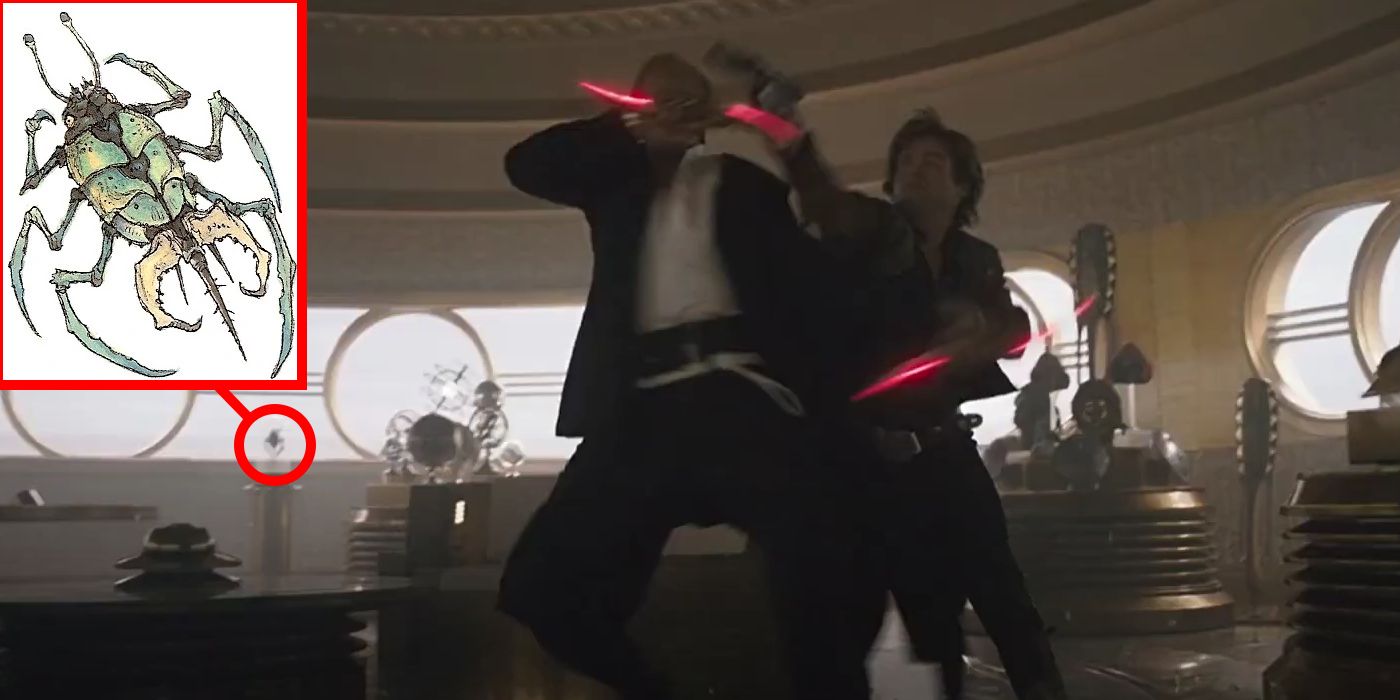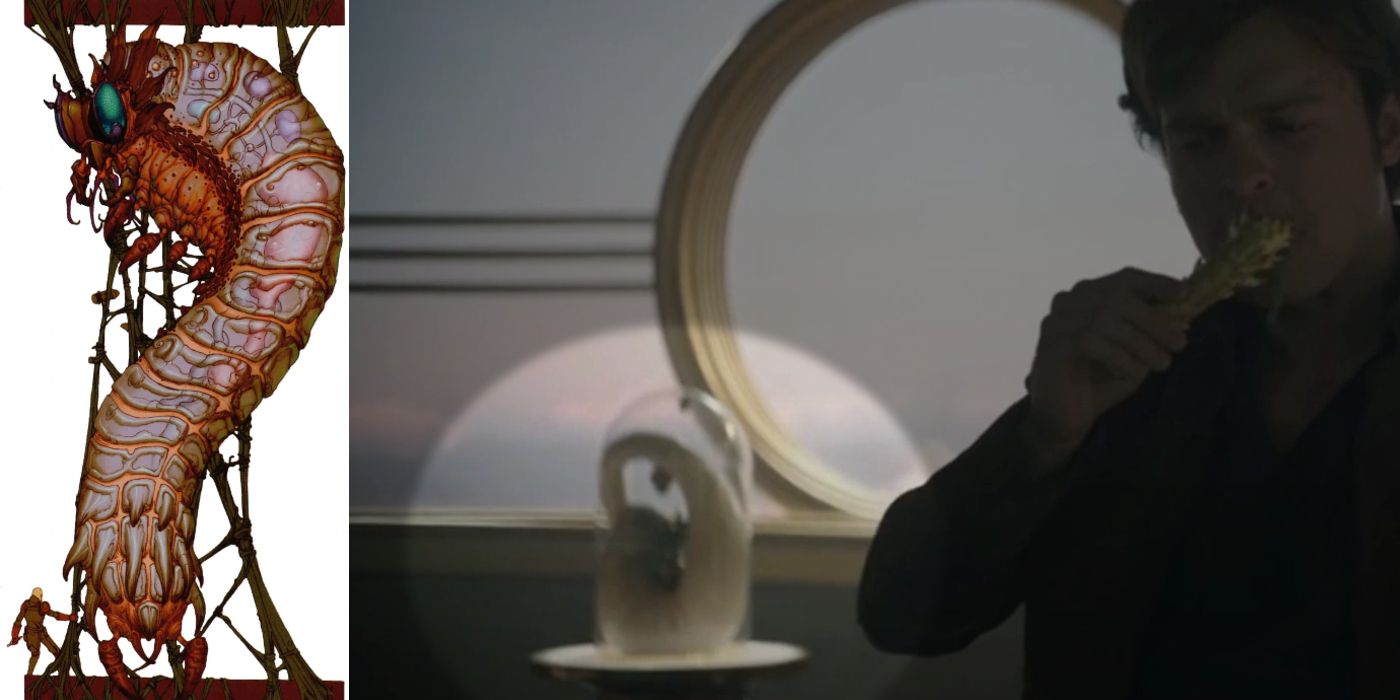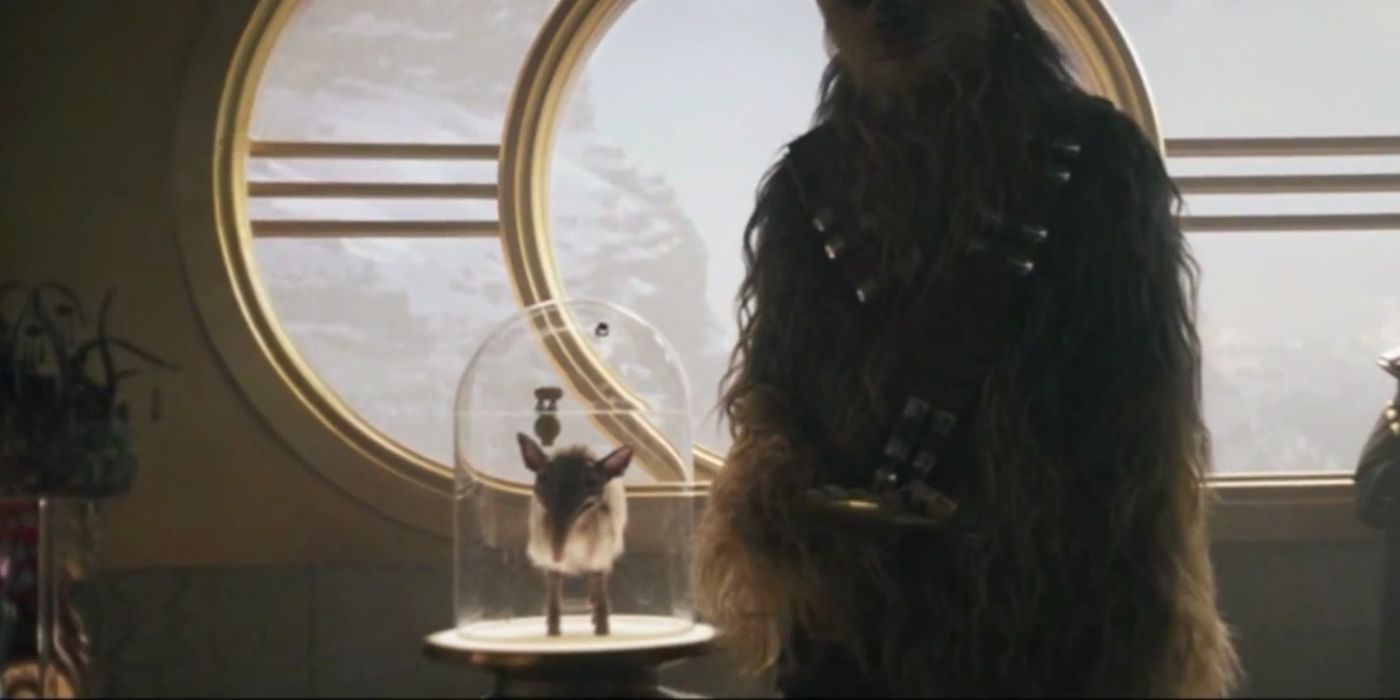Solo: A Star Wars Story explored the origins of the Star Wars universe's most legendary smuggler, Han Solo. The film reveals Han's introduction to the galactic criminal underworld, which sees him come face to face with the fearsome head of the Crimson Dawn crime syndicate, Dryden Vos.
A galactic godfather who flaunts his power and wealth, Vos is the owner of an impressive collection of curios, which are proudly displayed in his study aboard his star yacht, the First Light. Many items in the crime lord's collection actually have roots in Star Wars' now-abandoned Legends continuity, with several hailing from Legends stories about Han himself.
Mandalorian Rally Master Armor
This red Mandalorian armor of an ancient design, akin to the armor of a samurai, caught the eye of many seasoned Star Wars fans, and it's identified by Solo: A Star Wars Story - The Official Guide as belonging to a Mandalorian of the rank of rally master. Rally masters served as the Mandalorians' commanding officers in battle during the ancient wars of expansion, and in Legends continuity, had a similar purpose during the Mandalorian Wars of the Old Republic era. Though the design of their armor was different, the distinctive red color remained in Solo.
Masthead of Xim the Despot
Xim the Despot was a tyrant who forged his own empire in the years before the Republic was founded. He and his lost treasure ship, the Queen of Ranroon, were first introduced in the 1980 novel Han Solo and the Lost Legacy by Brian Daley. The book's cover featured an image of Xim's masthead -- a skull carved from mytag crystal -- which can be seen in Vos' collection. Notably, original Han Solo actor Harrison Ford also starred in Indiana Jones and the Kingdom of the Crystal Skull, giving the item a further subtle connection to Solo, though whether this was intentional on the filmmakers' part is unclear.
Dancing Goddess Statue
The ornate emerald Dancing Goddess stands over Vos' display of religious or spiritual artifacts. First introduced in Marvel's Star Wars #79 (1984), this idol of the Godoan people originally sat within the House of the Goddess -- a temple and techno-organic machine, which held an unexplained influence over the planet of Godo, serving to protect the lives of the Godoans. At an unspecified point in Legends continuity, Lando Calrissian won the statuette in a card game, while at another point, the statue -- or possibly a copy of it -- was owned by Jabba the Hutt.
Rafa Life Crystals
Introduced in the 1983 novel Lando Calrissian and the Mindharp of Sharu by L. Neil Smith, life crystals were harvested from trees found in the Life Gardens of the Rafa system. The crystals were believed to bring great physical health benefits when kept close to the body. When it was revealed the trees on which the crystals grew were a device designed to drain and conceal the intelligence of the Sharu people, protecting them from invaders seeking advanced civilizations to enslave, however, the trees were soon destroyed and life crystals became increasingly rare as a result. Under the reign of the Empire, these crystals were sold on the black market.
Ashes of Chancellor Contispex I
Vos owns arks containing the ashes of Contispex I, a former Supreme Chancellor of the Republic. Contispex was first mentioned in the Star Wars reference book The New Essential Chronology by Daniel Wallace and Kevin J. Anderson and later appeared in a codex entry in the MMORPG Star Wars: The Old Republic. Contispex was placed in power by the humanocentric cult Pius Dea and ignited a series of vicious crusades against nonhuman sects across the galaxy.
Rakatan Wraith Boxes
Another item in Vos' collection to have originated in The Old Republic are the Rakatan Wraith Boxes. These items, created by the ancient race of dark-side-powered conquerors the Rakata (themselves first appearing in Knights of the Old Republic), were imbued with incredible power through the Force. While they could supposedly grant power to those who used them, the boxes were also seen disintegrating those who came into contact with them without understanding how they worked.
Sith Temple Obsidian
It was not just the items on display stands in Vos' study that drew on Legends continuity. Vos' desk, said to represent the seat of his power in The Art of Solo: A Star Wars Story, is built on a base of obsidian taken from a Sith temple constructed by Exar Kun. In Legends continuity, Exar Kun was a former Jedi who fell to the dark side after pursuing forbidden knowledge of the Sith. During his reign, he oversaw the construction of Sith temples on Yavin 4, including the one that would later be used as a Rebellion base in A New Hope.
The Hand of the Lost King of Duro
One of the more grisly items owned by Vos is the mummified hand of the Lost King of Duro. In the Star Wars Roleplaying Game mini-adventure Death, Dirt and the Nerf Rancher's Daughter, a mummified corpse was dubbed the Lost King of Duro, or Archregent Vardovin IV. While its authenticity may have been questionable, the mummy was bought by Goontirk, owner of the museum ship, the Madman's Fortune. Goontirk had planned to exhibit the mummy but was ultimately killed when skekfish eggs inside the corpse hatched and the creatures attacked. The hand seen in Solo bears rings, at least one of which contains cell samples of Duro's royal bloodline.
Navi-Computer Dataplaque
While this ancient dataplaque displayed by Vos did not feature in Legends continuity itself, it was said that the glyphs seen on it led to the long-lost Queen of Ranroon -- the ancient treasure ship of Xim the Despot. Given that Vos also owned Xim's skull-shaped masthead, it's possible he had indeed found the Despot's ship using the dataplaque.
Cerulean Droch
The cerulean droch that hails from the jungle planet of Felucia may be a relative of the droch of Legends continuity. First appearing in the 1997 novel Planet of Twilight by Barbara Hambly, the droch were parasites from the planet Nam Chorios, starting off small enough to burrow under the skin of most living beings. As they absorbed their hosts' life energy and intelligence, they would grow and become more intelligent themselves, potentially even reaching true sentience. While little is known of their canon counterparts, the one Vos has on display appears huge by insect standards, suggesting it had claimed several victims if the cerulean droch grows in the same way as the Nam Chorios droch.
Taozin Grub
Doelsor Triggant, a Moff of the Empire, gifted the preserved grub of a taozin to Vos. While the grub Vos owns is small enough to sit atop a display stand, in Legends these worm-like creatures could grow up to 20 meters in length. As seen in their first appearance in the novel Darth Maul: Shadow Hunter by Michael Reaves, the taozin were Force-sensitive and could prevent other Force users from detecting them. For this reason, the Empire's Inquisitors were equipped with taozin amulets that would mask their presence from the Jedi they hunted.
Runyip
Kept in a state of suspended animation in an entropy field by Vos, the runyip is a small, four-legged herbivore. The one owned by Vos is of the kind found on the planet of Tran Mariel, though a separate but similar species, also called runyips, could be found on Yavin 4. Runyips first appeared in the 1994 novel Dark Apprentice by Kevin J. Anderson and went on to appear in several other Legends novels.

